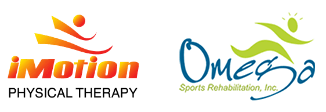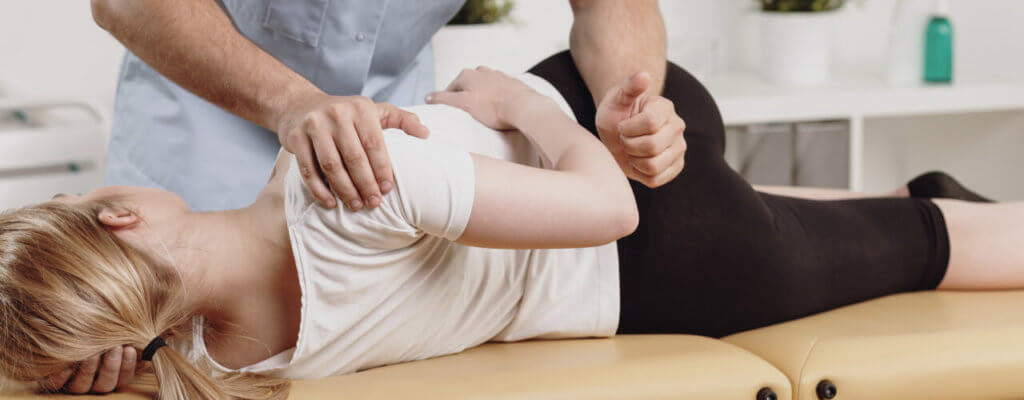Physical Therapy Provides Non-Surgical Back Pain Relief
If you’re plagued by nagging, chronic back pain, you might be willing to do just about anything to get that pain under control and return to your preferred way of life, even if it means surgical intervention. Back pain is no joke — but neither is back surgery.
Back pain is extremely uncomfortable to live with and can get in the way of you comfortably living your life. That doesn’t mean, however, that you should leap into a major procedure such as spinal fusion or discectomy surgery! These procedures may or may not relieve your pain; in fact, a failed back surgery can leave you in even more agony than before.
You should always try to pursue non-surgical treatment methods first. Here are 5 ways you can address your back pain non-surgically and find the relief you’ve been searching for, once and for all.
1. Transcutaneous Electrical Nerve Stimulation (TENS)
Transcutaneous electrical nerve stimulation, or TENS, is a state-of-the-art method for controlling back pain. Electrodes attached to the back send out electrical signals that stimulate the nerves. While its exact pain-relieving mechanism remains somewhat mysterious, it’s believed that the impulses affect neural “pain gates” and/or trigger the production of endorphins.
2. Massage Therapy
Massage therapy can benefit your back in a number of ways. Manipulation of tissue near the skin surface may improve circulation in exhausted or sore muscles. This technique is known as Swedish massage. The increased blood flow and fluid drainage will quickly reduce inflammation and help damaged tissue recover. It also decreases painful spasms in the muscles.
A stronger technique called deep tissue massage goes even further. Manipulation of deeper muscle groups can break up adhesions, masses of scar tissue that sometimes form over an injury site. Once the muscles have been freed from the scar tissue, they can function without pain and stiffness.
A licensed therapist can use specific techniques that target and break up the adhesions. In turn, this will loosen and unbind your muscles. Massage is a very important part of your physical therapy program because being adhesion-free is important for relieving pain and restoring a proper range of motion.
3.Targeted Stretches
Tight, rigid muscles can directly cause back pain or make existing back pain feel even worse. Stretching muscles will cause them to limber up, alleviate your pain and improve your movement. Loose muscles in the back are less likely to get new injuries as well. Typical physical therapy exercises for the back could include knee-to-chest stretches, kneeling lunges, back flexion stretches, and piriformis stretching of the muscle.
4. Strength-Building Exercises
Back pain may be caused by structural changes such as herniated discs, spinal stenosis, or spondylolisthesis. The stronger you can make your back muscles, the more effectively those muscles can compensate for these changes. With a stronger back, you can maintain a straighter posture with less pain. Common exercises to strengthen the back include bridges, lying lateral leg raises, and partial curls.
5. Heat and Cold Therapy
Heat and cold have their own distinct healing and pain-relieving properties. Our physical therapist may administer either technique or both techniques together (in sessions of 15 to 20 minutes each). Heat boosts the circulation, helping inflammatory substances to exit the tissues and relaxing painful muscles.
Cold therapy can prove especially useful as an immediate treatment for acute back injuries or when dealing with severe muscle strain. The cold reduces inflammation and swelling while also numbing the nerves
Choosing physical therapy to relieve your back pain
All of these management methods can help significantly decrease the levels of back pain you’re dealing with, however, using them in combination is more likely to give you optimal results. That’s where physical therapy can prove immensely helpful and convenient.
Physical therapists are skilled movement specialists who can create a customized physical therapy plan in which these various techniques complement each other for maximum effectiveness. Your physical therapy treatments will be split into two categories: passive and active.
Passive physical therapy treatments for back and neck pain may include ice and heat therapies, massage therapy, electrotherapy, or ultrasound. These help in relieving pain, stiffness, and inflammation.
Active physical therapy treatments for back and neck pain may include any stretches and exercises that our physical therapist deems fit for your specific condition. Active therapy helps to increase strength and flexibility, in addition to relieving pain in the spine and affected muscle.
Are you ready to start feeling your best?
Back pain can hinder your quality of life, but rest assured that things don’t have to be this way. You can find relief with physical therapy and becoming more active on one of our treatment plans created just for you. Contact our physical therapist today to schedule a consultation and learn more about our conservative back pain management strategies!
Sources:
- TENS unit: Benefits, side effects, and researchhttps://www.medicalnewstoday.com › articles
- Massage Therapy: What You Need To Know | NCCIHhttps://www.nccih.nih.gov › Health Information
Tags: PT, health, wellness, naturalpainrelief, physicaltherapy, achesandpains, healthandwellness, healthytips, physicaltherapist


